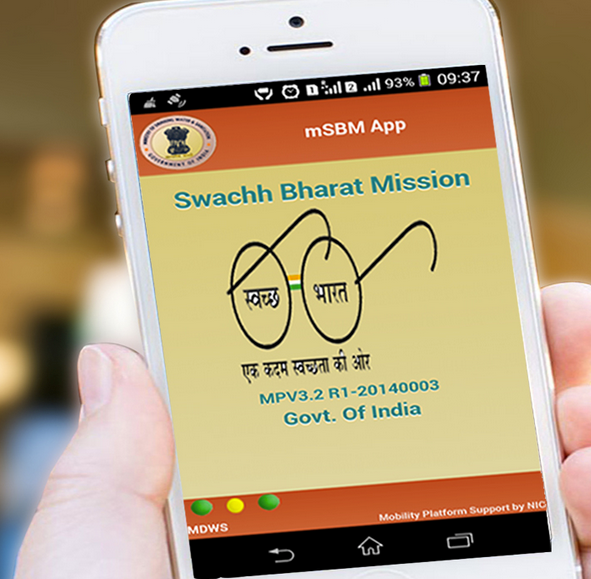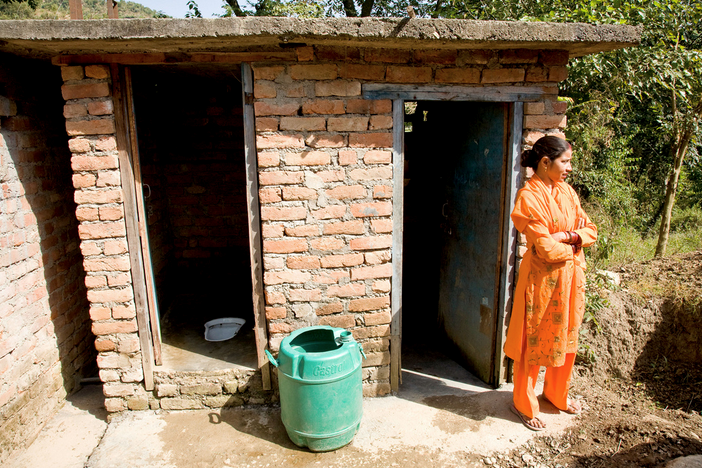In India, smart devices will play a key role in encouraging and documenting compliance with Prime Minister Modi’s Clean India Campaign.
Aided by mobile monitoring applications, India’s Prime Minister, Narenda Modi, has stepped up his already ambitious Clean India campaign.
Over the last 15 years, India’s Ministry of Drinking Water and Sanitation has carried out several campaigns in an attempt to reduce the level of open defecation in rural areas. Open defecation contaminates drinking water and exposes people to potentially life threatening diseases. There has been improvement—shown in a decrease in deaths from diarrhea-related illnesses—but significant work remains in building infrastructure and changing long-held social norms.
An intervention study published in The Lancet indicates that merely giving people toilets is not enough to get them to use them. The Clean India campaign incorporates public education and social marketing to create demand for sanitation facilities in rural areas. Public health officials are also focusing on schools, where lavatories are constructed and children receive instructions about adequate hand washing.
Using New Technology to Solve Old Problems

SBM app - Source: TSC India
The popularity and accessibility of mobile phones and smart devices has changed the way officials document compliance. Photographic evidence of construction can be captured and transmitted using the same device, and instantly uploaded to a shared database.
Previous sanitation campaigns involved erecting communal toilets, and providing households with incentives of Rs 12,000. However, not all people taking the incentives actually built toilets.
When these scams were uncovered in 2011, the Ministry mandated photographic evidence of lavatory construction from those using government funds to build toilets. Officials use a mobile app to upload pictures of completed toilets to a database maintained by India’s Ministry of Drinking Water and Sanitation.

Source: Gates Foundation (Flickr: CC)
After discovering that roughly 80% of toilets said to be constructed in the last 10 years were not, Prime Minister Modi has changed the incentive process. Only half of the Rs 12,000 incentive payment is given in advance of construction.
Once photographs uploaded via a mobile app prove that the toilets are built to standard specifications, the remaining half is paid. The mobile app captures pictures of latrines, as well as latitude and longitude coordinates. As of January 10, 2015, 1881 uploaded photos had been approved.
Prime Minister Modi recently announced that he has taken this mobile tracking to the next level. Officials will use mobile phones or tablet devices to keep toilet logs, providing real-time reports of toilet use rather than just monitoring construction.
More Mobile Phones than Toilets
The United Nations University indicated that, in 2013 more people living in India had mobile phones than toilets. Specifically, there were some 545 million mobile phones connected in India, while only 366 million had access to improved sanitation.
Worldwide, about 1 billion still people practice open defecation. Approximately two-thirds of those people reside in India.
Sanitation Is a Major Public Health Concern
According to the World Health Organization, diarrhea is the second leading cause of death for children under five. Diarrhea is a symptom of infections caused by bacterial, viral or parasitic organisms, most of which are spread by water contaminated by human feces.
Exposure to fecal pathogens can lead to fluid loss from severe diarrhea, which can be life threatening, particularly for children, and for people who are malnourished or have impaired immunity.
Additionally, proper sanitation has a direct impact on quality of life. Sanitation has been shown to improve school attendance and completion, especially for girls. It results in fewer work and school days missed due to preventable illness. Latrines also provide more comfort, privacy, and safety, especially for women and children.
The number of children dying annually from diarrhea-related illnesses has decreased worldwide, from 1.5 million deaths in 1990 to a little more than 600,000 in 2012. If Prime Minister Modi’s Clean India campaign successfully ensures accountability and achieves permanent behavior change, the number of diarrhea deaths should decrease significantly.
Jenn Lonzer has a B.A. in English from Cleveland State University and an M.A. in Health Communication from Johns Hopkins University. Passionate about access to care and social justice issues, Jenn writes on global digital health developments, research, and trends. Follow Jenn on Twitter @jnnprater3.


